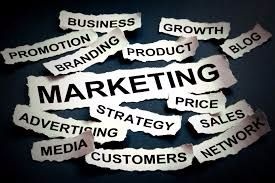
Marketing management is the organizational discipline which focuses on the practical application of marketing orientation, techniques and methods inside enterprises and organizations and on the management of a firm's marketing resources and activities.
Globalization has led firms to market beyond the borders of their home countries, making international marketing highly significant and an integral part of a firm's marketing strategy.Marketing managers are often responsible for influencing the level, timing, and composition of customer demand accepted definition of the term. In part, this is because the role of a marketing manager can vary significantly based on a business's size, corporate culture, and industry context. For example, in a large consumer products company, the marketing manager may act as the overall general manager of his or her assigned product. To create an effective, cost-efficient marketing management strategy, firms must possess a detailed, objective understanding of their own business and the market in which they operate.In analyzing these issues, the discipline of marketing management often overlaps with the related discipline of strategic planning.
What is Marketing Plan?
What is Marketing Plan?
The Marketing Plan is the written document that describes your advertising and marketing efforts for the coming year; it includes a statement of the marketing situation, a discussion of target markets and company positioning and a description of the marketing mix you intend to use to reach your marketing goals .
A company needs a marketing plan just as it needs a business plan. Here's how to write a five-part marketing plan that works as hard as you do:
Section 1: Situation Analysis
This introductory section contains an overview of your situation as it exists today and will provide a useful benchmark as you adapt and refine your plan in the coming months. Begin with a short description of your current product or service offering, the marketing advantages and challenges you face, and a look at the threats posed by your competitors. Describe any outside forces that will affect your business in the coming year--this can be anything from diminished traffic levels due to construction if you're a retailer or a change in law that could affect a new product introduction if
you're an inventor, for example.
Section 2: Target Audience
All that's needed here is a simple, bulleted description of your target audiences. If you're marketing to consumers, write a target-audience profile based on demographics, including age, gender and any other important characteristics. B2B marketers should list your target audiences by category (such as lawyers, doctors, shopping malls) and include any qualifying criteria for each.
Section 3: Goals
In one page or less, list your company's marketing goals for the coming year. The key is to make your goals realistic and measurable so that you can easily evaluate your performance. "Increase sales of peripherals" is an example of an ineffective goal. You'd be in a much better position to gauge your marketing progress with a goal such as, "Increase sales of peripherals 10 percent in the first quarter,
15 percent in the second quarter, 15 percent in the third quarter and 10 percent in fourth quarter."
Section 4: Strategies and Tactics
This section will make up the bulk of your plan, and you should take as much space as you need to give an overview of your marketing strategies and list each of the corresponding tactics you'll employ to execute them. Here's an example: A client of mine markets videotape and equipment. One of her goals is to increase sales to large ministries in three states by 20 percent. Together we've developed a strategy that includes making a special offer each month to this prospect group, and one of her tactics is to use monthly e-mails to market to an in-house list.
Your tactics section should include all the actionable steps you plan to take for advertising, public relations, direct mail, trade shows and special promotions. You can use a paper calendar to schedule your tactics or use a contact manager or spreadsheet program--what matters most is that you stick to
your schedule and follow through. A plan on paper is only useful if it's put into action.
Section 5: Budget Breakdown
The final section of your plan includes a brief breakdown of the costs associated with each of your tactics. So if you plan to exhibit at three trade shows per year, for example, you'll include the costs to participate in the shows and prepare your booth and marketing materials. If you find the tactics you've selected are too costly, you can go back and make revisions before you arrive at a final budget.
You can adapt this plan as your business grows and your marketing programs evolve. You'll find it's a simple tool you can't afford to be without.




